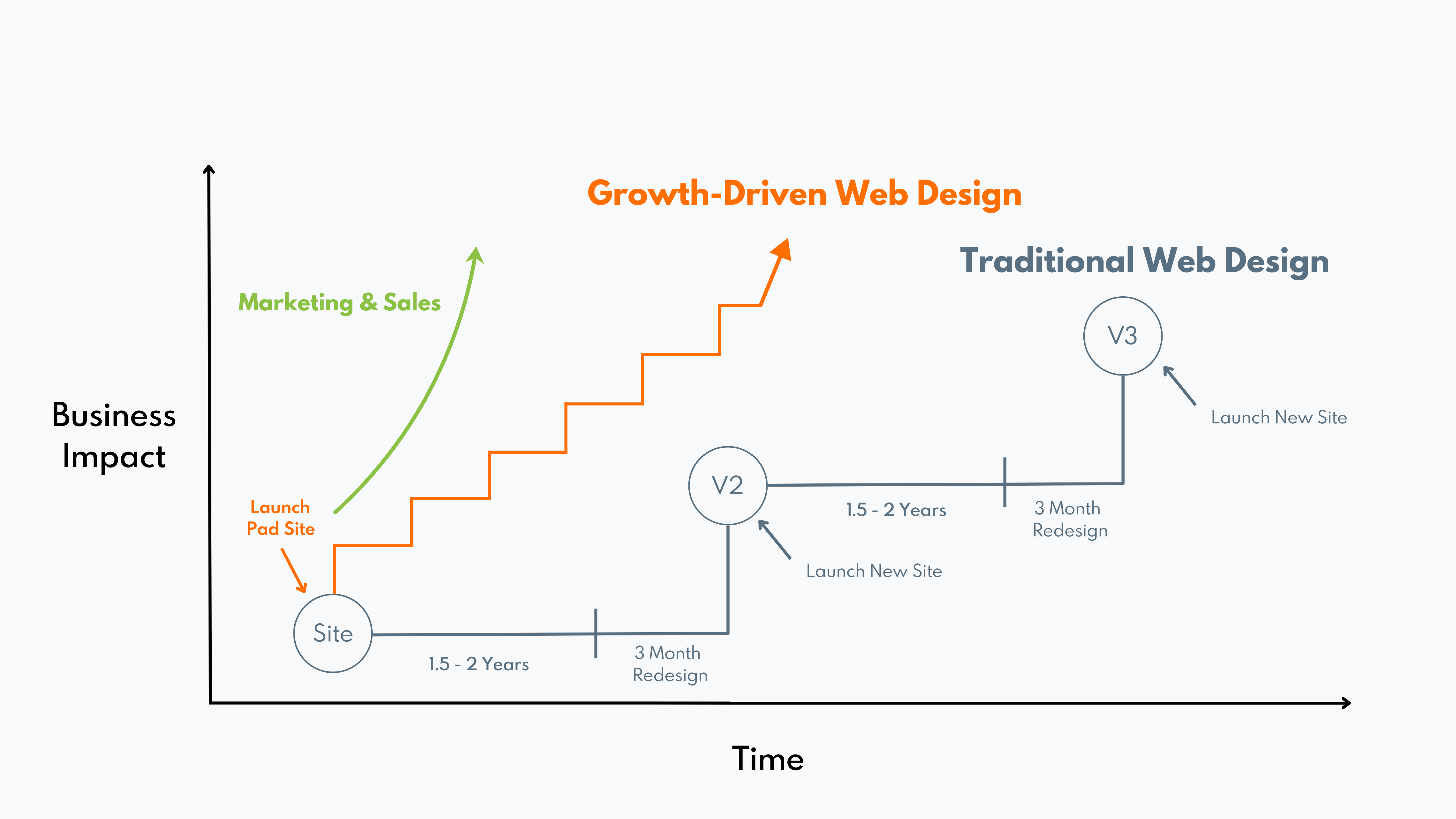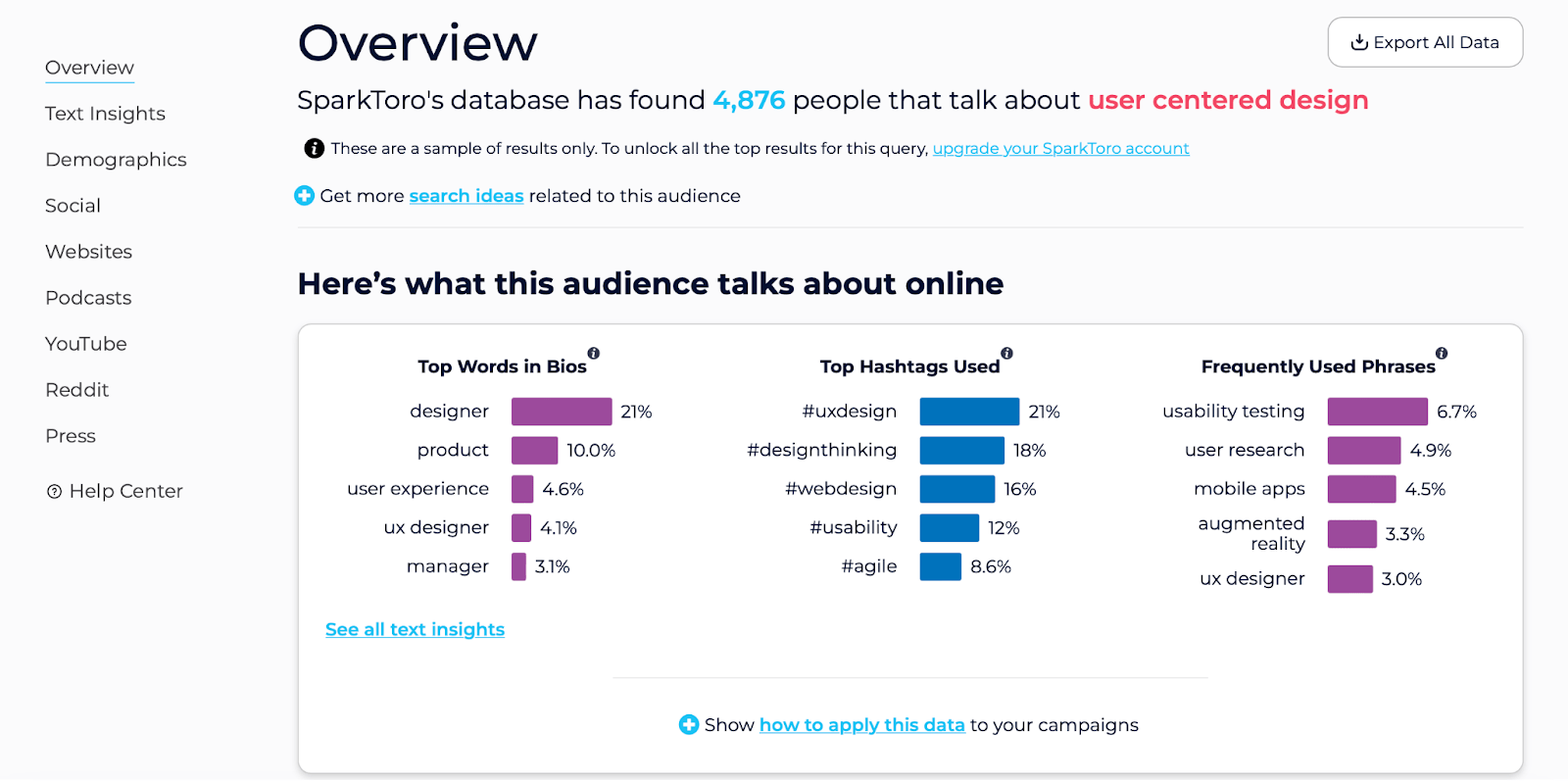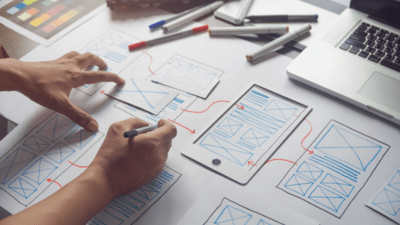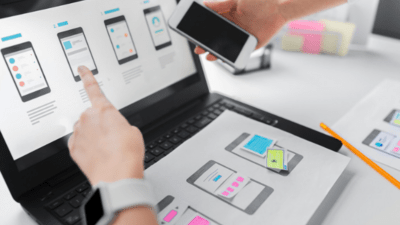Using User-Centered Design and Empathy to Deepen B2B Customer Relationships

Going beyond transactions to build strong customer relationships through empathy and data-driven design.
In today’s digitized world, where business-to-business (B2B) operations often risk devolving into impersonal transactions, the adoption of user-centered design stands out as a beacon for fostering deeper, more empathetic customer relationships.
While harnessing the power of empathy when developing user experiences is key to creating positive brand experiences, it’s worth understanding how to effectively integrate and leverage user-centered design principles backed by data insights in the modern era chock full of impersonal messaging and cookie-cutter campaigns.
In this article, we explore the pivotal role of user-centered design in humanizing the B2B experience and sales cycle, guiding organizations to transform mere transactions into lasting partnerships grounded in trust and mutual respect.
By weaving together technological prowess and expertise, including AI tools, with the timeless principles of empathy and design, let’s dive into secrets that can unlock new dimensions of customer satisfaction, loyalty, and growth.
Understanding User-Centered Design
At its core, user-centered design is an ethos that prioritizes the needs, preferences, and pain points of users in a full-circle design process. As defined by the Interaction Design Foundation, “User-centered design (UCD) is an iterative design process in which designers focus on the users and their needs in each phase of the design process. In UCD, design teams involve user insights throughout the design process via various research and design techniques to create highly usable and accessible products for them.”
Understanding what drives your clients, what challenges they face, and what they value enables businesses to tailor their services and digital interactions—be it through web design, AI tools, or UX design—to better meet these needs. This approach aligns with web design best practices, ensuring that every digital touchpoint, from websites to email marketing campaigns, is crafted with the user’s experiences in mind. It’s clear that the application of user-centered design principles in the B2B realm is beneficial and necessary.
However, before you can truly optimize with your clients in mind, you must understand how to harness empathy and the tools that enable this iterative process for your organization.
The Role of Empathy in B2B Customer Relationships
Empathy—the ability to understand and share the feelings of another—serves as the foundation of meaningful B2B customer relationships. It goes beyond simple customer service; it's about embedding a sense of understanding and care into every aspect of your business. From the strategic deployment of AI solutions to interactive web design, empathy can transform how businesses engage with their clients, fostering a deeper connection that promotes loyalty and trust.
A great example of empathy when building B2B relationships can be found in the way we at O8 have helped our own clients in their times of need. When Katelyn Bolds of Tangent was searching for an agency to manage their social media accounts, it was clear to see that this need extended beyond content creation. As Bolds stated after the fact in her testimonial, “It was so great to be able to focus on the trade show and know the social media was still going in the background. I didn't have to worry about it. I'm very grateful.” At the moment, Bolds may have been asking for a social media campaign strategy, but digging deeper, it is clear that the real need was for someone to reduce the stress and responsibilities of those in the office during crucial networking events such as trade shows.
In application, it can be as simple as taking the time to prepare and ask direct questions outside of the scope of what’s expected during meetings or simply listening attentively to the needs expressed by these individuals, putting in the extra effort to suggest improvements where necessary. It’s this extra care and consideration that often leads to better and more successful relationships rather than being stuck in a box-checking state of mind.
Recognizing this through a sense of empathy that each of your clients has needs you can meet through user-centered design and the deepening of customer relationships is the first step towards building a brand your clients know they can trust time and time again.
Building Customer Trust Through Design and Marketing
Trust is the cornerstone of any successful B2B relationship, and the design of your digital platforms plays a crucial role in building this trust. An effective website design, characterized by clarity, consistency, and ease of navigation, can significantly enhance a client's perception of your brand. However, there is much more to user-centered design and building a level of trust within your client base than just web design. Below are a few other ways your company can utilize these concepts in all facets of branding and marketing:
Web Design and UX: Growth-Driven Design in Action
In the realm of web design and UX, user-centered design involves everything from growth-driven design methodologies to usability testing and journey mapping. By implementing these strategies, brands can effectively connect with their customers and clients from an empathetic and data-driven point of view.
Growth-driven design (GDD) represents a paradigm shift in web design and user experience (UX), pivoting from traditional, often static approaches to a dynamic, iterative process deeply rooted in user feedback and agile methodologies. At its core, GDD is a symbiotic blend of lean and agile principles tailored to craft websites that not only meet but anticipate and adapt to the evolving needs of their users. This methodology unfolds in three transformative stages: strategy, the launch pad, and continuous improvement, each stage serving as a stepping stone toward creating a website that truly resonates with its audience.
Strategy: The Compass of User Empathy
The journey begins with strategy, which aims to cultivate a deep, empathetic understanding of your audience's world. It's about seeing your website not just as a collection of pages but as a solution to your users' problems. Journey Mapping plays a pivotal role here, serving as a tool to chart your customer's journey from awareness to decision-making. By meticulously mapping this journey, you highlight critical touchpoints and the emotional landscape at each stage, ensuring that your website is not just a destination but a guide along their path.
The Launch Pad: Your Agile Foundation
Following the strategic groundwork is the launch pad phase, where the aim is to swiftly build a website that outperforms your current one yet remains a work in progress. Consider this stage setting a solid foundation—a launch pad—for future enhancements. This website is live, functional, and better than what preceded it, but it's also the beginning, not the end. It's your base camp for the climb ahead, equipped with the essentials and ready for the ascent.
Continuous Improvement: The Heartbeat of GDD
Now that your launch pad site is live, the continuous improvement phase embarks on leveraging real user data to inform high-impact actions for business growth. This is where the methodology's essence truly shines, blending usability testing, feedback loops, and agile Implementation into a cohesive, ongoing refinement cycle.
- Usability Testing: At this stage, your digital touchpoints, whether your website or app, are rigorously tested with actual users from your target market. This ensures that your site offers intuitive navigation and clear messaging, making every interaction a step towards a seamless user experience.
- Feedback Loops: Integral to continuous improvement are systems for ongoing feedback. Whether through surveys, user testing sessions, or direct communication channels, these loops allow you to gather, analyze, and act on user responses. They transform user feedback from a static report into a dynamic tool for growth.
- Agile Implementation: Embodying the spirit of GDD, Agile Implementation encourages an iterative approach to web design. This means launching quickly, testing rigorously, learning continuously, and optimizing relentlessly. It's about making informed, data-driven decisions that iterate your marketing strategies based on real user behavior and feedback.
Growth-driven design is more than a methodology; it's a mindset that champions flexibility, user-centricity, and continuous learning. By adopting GDD, you commit to a process that places the user at the center, ensuring that every decision and design element serves not just the immediate needs but fosters a lasting engagement with your audience.

Schedule a 15 minute call and learn how to turn your website into a growth machine today
Social Media
Social media marketing thrives on engagement, and applying user-centered design in this way means crafting content that fosters meaningful interactions. The essence of creating a lasting impact lies in understanding and connecting with your audience on a deeply personal level. This profound connection is achieved through meticulous customer research, employing tools like Sparktoro to delve into the intricacies of what truly resonates with your audience. It's about transcending the superficial layers of engagement to discover where your customers spend their time and what content captivates their interest.
Employing applications such as Sparktoro, you can uncover the podcasts they listen to, the accounts they follow, and the hashtags they use, offering you a comprehensive view of their digital footprint. This wealth of information enables you to tailor your social media strategy, ensuring that your content reaches your audience and speaks to them in a language they understand and appreciate.

The magic of user-centered social media marketing unfolds when personalization is at the forefront of your efforts. It's about recognizing that behind every like, comment, and share is a person seeking connection. By integrating a human touch into your strategy—showcasing the faces and stories behind your brand—you create a bridge between your business and your customers. This could manifest in behind-the-scenes content, employee takeovers, or customer spotlights, each adding a layer of authenticity and relatability to your brand.
Moreover, the power of deep customer research shines in its ability to inform the development of content that not only engages but also elicits meaningful interactions. Rather than relying solely on automated interactions, such as AI Chatbots, the focus shifts towards fostering genuine dialogues. While technology can enhance the customer experience by offering efficiency, the human element—be it through personalized responses, community engagement, or direct conversations—cements the relationship between your brand and its audience.
Imagine crafting content so aligned with your audience's values and interests that each post becomes a conversation starter, a point of connection, and a reflection of their identity. This is the power of user-centered social media design informed by deep customer research. It's not just about catching your audience's attention; it's about holding it, nurturing it, and building a community around shared experiences and values. Through the lens of personalization, human touch, and the insights garnered from tools like Sparktoro, your social media presence becomes more than a marketing channel—it becomes a meeting place for your brand and its most engaged advocates.
Email Marketing
Email marketing is another area where user-centered design can make a significant difference. Companies can send more targeted and relevant content by segmenting email lists based on user behavior and preferences. If you’ve ever bought something and then soon after received an email regarding similar products, congratulations, you have already been the target of a user-centered email design campaign unbeknownst to you.
To implement this strategy, your team might use data-driven personalized marketing techniques to create custom email campaigns for different segments, increasing open and click-through rates. Incorporating elements of interactive web design into emails, such as animated CTAs or interactive product showcases, can further enhance user engagement and drive conversions as well.
Account-Based Marketing (ABM)
Account-Based Marketing (ABM) is a strategy that tailors marketing efforts to specific high-value accounts, making user-centered design its core principle. By understanding each target account's unique challenges and needs, businesses can develop bespoke marketing campaigns that truly resonate.
For instance, using insights from data-driven customer experience analysis, a B2B company might create customized content and personalized web experiences for key decision-makers within the target account, fostering a deeper connection and increasing the chances of securing the deal.
The Synergistic Role of Technology and AI in User-Centered Design
While the human touch is irreplaceable in establishing genuine connections, AI and other technologies are complementary in enriching the user-centered design approach. The key is to find the balance between AI that helps and AI that artificially replaces your empathy, human connection, and trust as a brand.
From chatbots that deliver instant customer support to AI-driven solutions that craft content and recommendations uniquely tailored to individual user behaviors, technology is pivotal in elevating the depth and quality of customer interactions. It's a delicate dance of combining automation with personalization, a strategy that streamlines communication and enriches the customer relationship journey.
Moreover, AI's influence extends into the foundational stages of personal development and market research, which are crucial elements in both design and B2B marketing strategies. By leveraging artificial intelligence, you can accelerate the creation of detailed personas representing various roles within your client's organization. AI analyzes vast amounts of data to identify patterns and trends in behavior, goals, and pain points specific to each persona. This process ensures that your marketing efforts are not based on assumptions but are informed by data-driven insights, allowing for a more targeted and practical approach.
In essence, AI empowers you to craft strategies that resonate on a personal level with each segment of your audience, making your interactions more meaningful and your solutions more apt. The marriage of AI with persona development not only optimizes the decision-making process but also ensures that every piece of content, product recommendation, and customer interaction is rooted in a deep understanding of your client's needs and preferences.
According to Forbes, “71% of consumers expect personalized experiences from the customers they interact with, and 76% of consumers get frustrated when that personalization doesn't occur.” These kinds of statistics are why the use of technology and AI should be done intelligently and sparingly rather than with the sole intention of saving time or money as a company. After all, with AI personalization statistics all aligned, this ‘money-saving idea’ could actually cost your brand dearly if mishandled.
A Call to Action for Humanizing B2B Experiences
At the end of the day, integrating user-centered design into B2B strategies offers a powerful pathway to transforming customer relationships. By prioritizing empathy, leveraging technology judiciously, and adhering to design best practices, businesses can create digital experiences that resonate deeply with their clients. The goal is to move beyond transactions and to build enduring partnerships characterized by trust, understanding, and mutual success.
In an era of digital interactions, the human element remains the most potent differentiator. Companies that embrace user-centered design, not as a mere strategy but as a guiding philosophy, will find themselves well-equipped to navigate the complexities of B2B relationships in the digital age. By doing so, they not only enhance their customer satisfaction and loyalty but also position themselves as leaders in the drive towards a more empathetic, humanized business landscape.
For a closer look at the immense difference user-centered design makes in customer engagement, retention, and satisfaction, check out O8’s extensive list of case studies or get in touch today.







